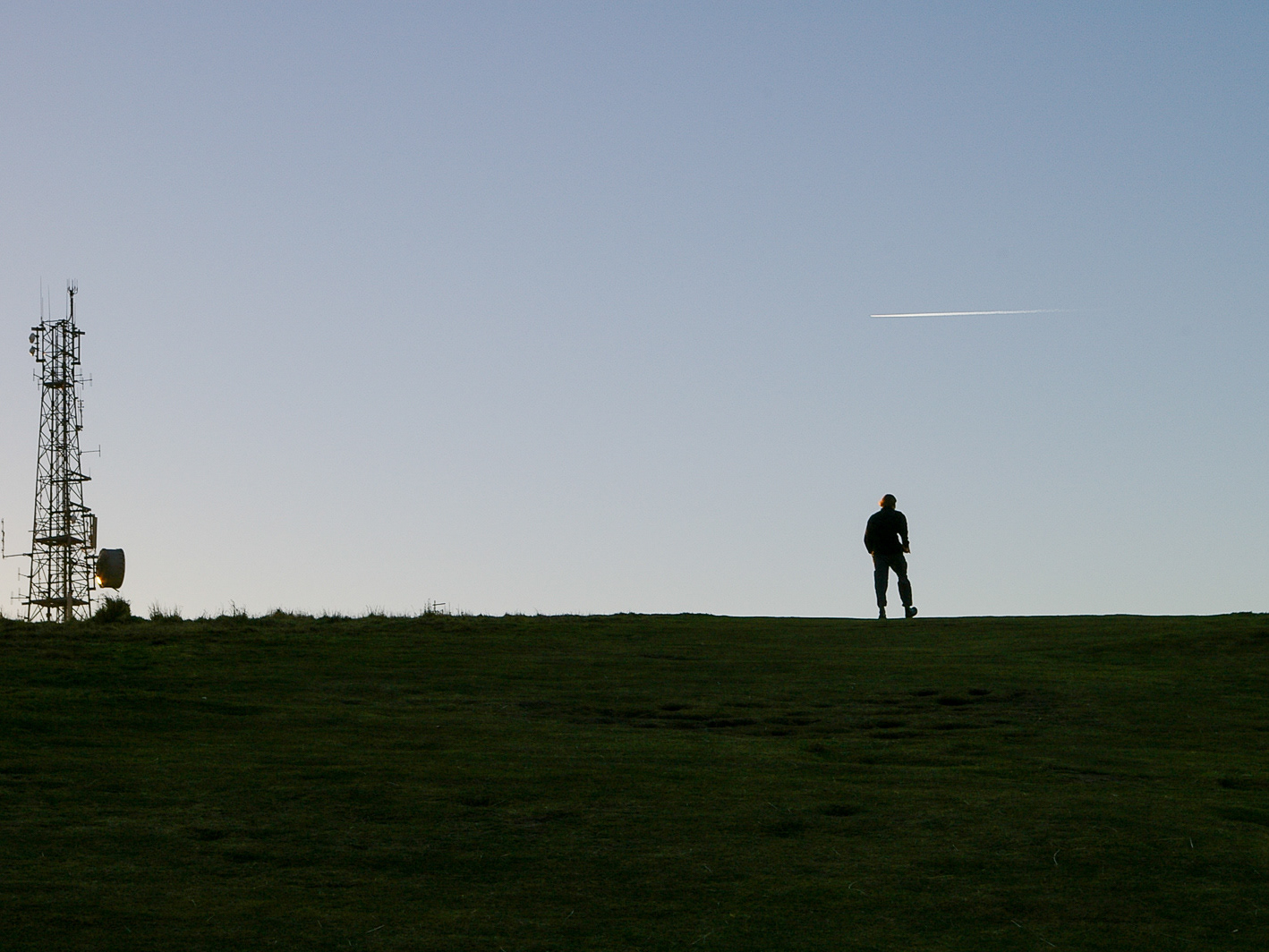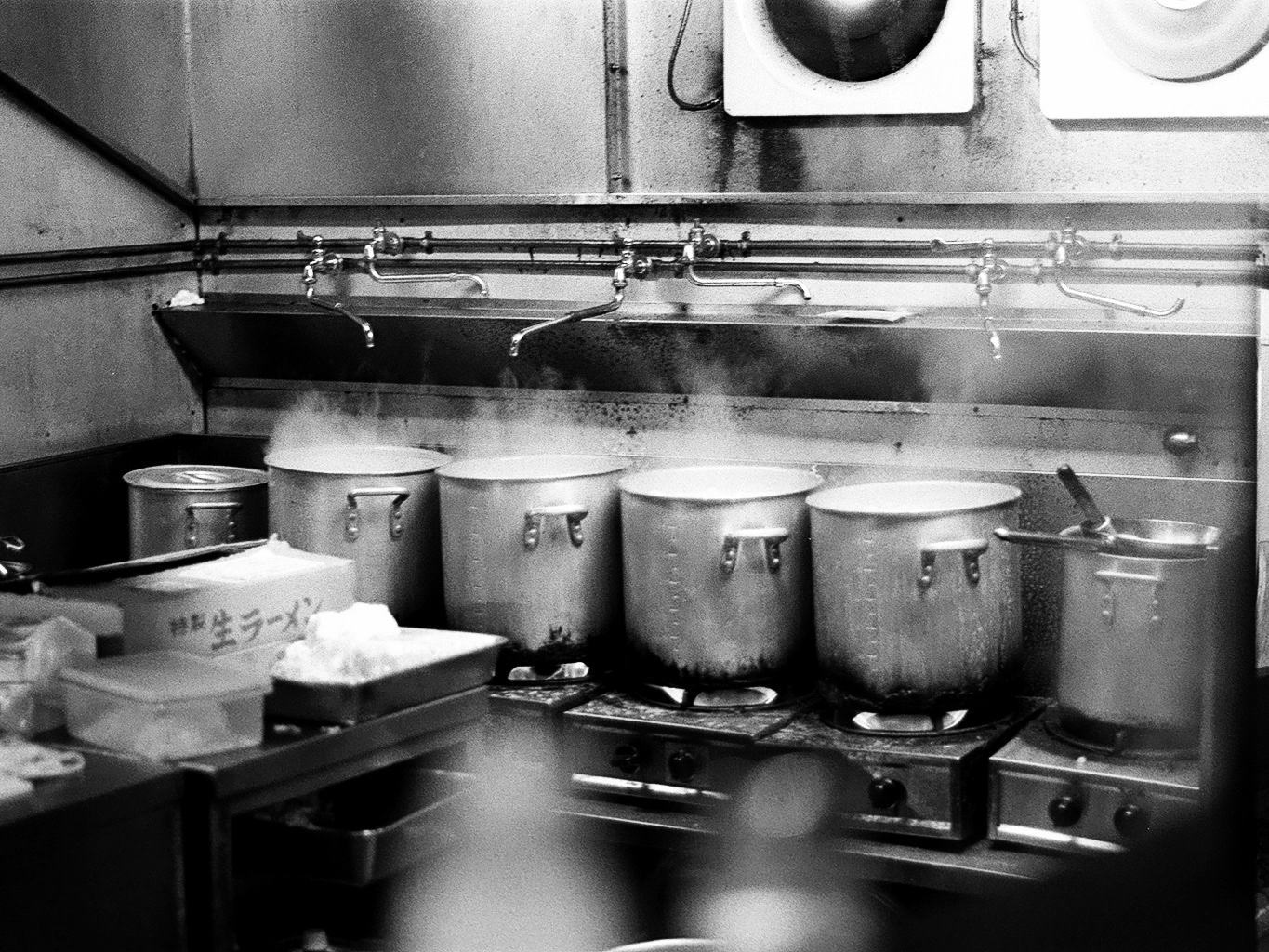Lesson 336 - Night on Earth (Background is poorly articulated. An uninteresting, too bland background does not catch the viewer's attention.)
Lesson 337 - Gargnano (“Life is a combination of magic and pasta.” ― Federico Fellini)
Lesson 338 - Hell is a place in Hawaii (Highly sensitive, or fast, negative material has coarser grain, which can result in images that are too soft. )
Lesson 339 - The spa symbolism (Lips look bleached, cheeks are pale, the face looks bland and featurelss. High ISO film material is more sensitive to red color, a blue filter should be used for portraits.)
Lesson 340 - Yin or yang (Dark short lines or dots on the positive. There were blemishes and mechanical flaws on the film.) [ See also Lessons 180 and 191 (Fungus) ]
Lesson 341 - Game for one (“Why can't a photograph be all four things at once? - be an art object; be a document, what ever that means exactly, but deal with content; be a formalist exploration; and operate on some, metaphor is not the right word but, resonant level..” - Stephen Shore)
Lesson 342 - Cul-de-sac (Environmental photography describes our environment, its happenings, and scenes. It can overlap most genres of photography and hence can be done by anyone with awareness about their environment.) [ See also Lesson 40 (Iconicity) ]
Lesson 343 - Strike a pose (Mysterious liquids in the darkroom. It is important to label all chemicals as soon as possible to avoid heaps of old unidentified bottles later on.)
Lesson 344 - Ninety calories (Flat-lay techinque is becoming popular in food photography. Natural light, mild shadows, subtle texture background, and framing are the key ingrediences to a tasty food photo.)
Lesson 345 - And into the forest I go, to lose my mind and find my soul. ("Light makes photography. Embrace light. Admire it. Love it. But above all, know light. Know it for all you are worth, and you will know the key to photography." - George Eastman, founder of Kodak) [ See also Lesson 319 (circle, ezoterics) ]
Lesson 346 - A kittie ("If in your heart of hearts you want to take pictures of kitties, take pictures of kitties." - Alec Soth) [ See also Lesson 282 (post-photography cat) ]
Lesson 347 - Woodbine (“Photography is a way of feeling, of touching, of loving. What you have caught on film is captured forever … it remembers little things, long after you have forgotten everything. - Aaron Siskind”
Lesson 348 - Smoke signals (You can use buildings, factories, and other man-made structures compositionally in the same way other landscape photographers use trees and rolling hills.)
Lesson 349 - La Cour Du Domaine ("Each photograph is read as the private appearance of its referent: the age of Photography corresponds precisely to the explosion of the private into the public, or rather into the creation of a new social value, which is the publicity of the private: the private is consumes as such, publicly." - Roland Barthes, Camera lucida)
Lesson 350 - Alternative ending of American beauty (Adding complementary blue tones to warm browns and ochres creates a sense of catchy, almost superficial, harmony.) [ See also Lesson 223 (baloons, movies) ]
Lesson 351 - PARE (In semiotics, denotation refers to the meaning hidden in the symbols of the image; it is what we see there. Connotation is the additional, second-level meaning that arises from our understanding of the laguage of the media and our interpratation; it is what is implied in the image. )
Lesson 352 - Acer platanoides (Macro photography is a close-up photography of small subjects, originally for scientific purposes. The main challenges include proper lighting and extremely shallow depth of field.)
Lesson 353 - Thou shalt have no other gods before us (Modern digital cameras often have a rule of thirds overlay on LCD display that helps to compose an image.) [ See also Lesson 9 (rule of the thirds) ]
Lesson 354 - Tourist sedan chair worker
("I felt compelled to venture forth and explore the true face of the world. Leading a satisfying life of plenty had blinded many of us to the immense hardships beyond our borders." - Werner Bischof)
Lesson 355 - My friend Arnošt (If a photograph is part of a collection, such as in a book or at an exhibition, one must carefully observe it in the context of its neigbours. Otherwise good picture can create abrupt changes in the sequence when it differs significantly from previous ones.) [ See also Lessons 354 and 356 (context) ]
Lesson 356 - Some city (Frog's eye view is a point of view from the ground or from within a system where photographs are shot either straight up or from a very low angle. This technique offers a new perspective for known objects and can be effective in conveying emotions or stories.) [ See also Lesson 126 (worm's eye view ]
Lesson 357 - Hans Boodt Mannequins (“It’s one thing to make a picture of what a person looks like, it’s another thing to make a portrait of who they are.” - Paul Caponigro) [ See also Lesson 355 (context) ]
Lesson 358 - Come see Seibu! ("After silence, that which comes nearest to expressing the inexpressible is music." - Aldous Huxley)
Lesson 359 - Brooklyn (Exposing for the highlights is a technique for dealing with high dynamic range of the scene by slight underexposure in order to get the light parts of the image correctly exposed. It is especially useful for media sensitive to overexposure, such as slide films and digital cameras. On the contrary, black and white negatives should be exposed for the shadows.) [ See also Lesson 124 (underexposed) ]
Lesson 360 - Palmovka (In color theory, yellow, blue and red are called primary colors because they can't be mixed from other colors. Earth pigments, like sienna or umber, are sometimes added to minimalistic palettes for their unique qualities and mixing versatility.) [ See also Lesson 350 (ochres and blues) ]
Lesson 361 - The opposite of ikebana (A feeling of drama and disorder supported by the choice of wide lens, hard lighting and rather aggressive crop.) [ See also lesson 98 (ikebana) ]
Lesson 362 - Rails (Lines are the basic building block of photographic composition. Horizontal lines create an impression of peace and tranquility.) [ See also Lesson 18 (skewed lines) ]
Lesson 363 - Sakura blossoms in pink
Lesson 364 - Lotus (Golden spiral is a natural leading line to place picture elements in a visually balanced and pleasing composition. As the lotus flower itself, it represents the purity and perfection and it can be found anywhere from Egyptian pyramids, to da Vinci Last Supper, sometimes even more times.)
Lesson 365 - Hard hat area (“One of the joys of photography is that you never know what will come at you from around the next corner.” – Tom Ang)
Lesson 366 - At the top (Documentary photography captures not only important social events, but also individual emotions and crucial life moments of anonymous individuals completely irrelevant to world affairs.) [ See also Lesson 285 (The war will begin after the break) ]
Lesson 367 - Human condition (Surrealist ideas pose a challenge to photography which has to question the notion of normality either by composed still lifes and collages or by found situations, often beyond the verge of a joke.)
Lesson 368 - Pool on an island ("There are stories, like maps that agree... too consistent among too many languages and histories to be only wishful thinking.... It is always a hidden place, the way into it is not obvious, the geography is as much spiritual as physical. If you should happen upon it, your strongest certainty is not that you have discovered it but returned to it. In a single great episode of light, you remember everything." - Thomas Pynchon, Against the day) [ See also Lesson 290 (A pool on another island) ]
Lesson 369 - Water color (White dots on the photograph are caused by dust particles on the negative most often caused by fan drying in a dusty environment) [ See also Lesson 363 (white dots) ]
Lesson 370 - Experimental house, built 1960, abandonned 2017 (Unjustifiable fascination with a particular object or place creating idiosyncratic themes without general impact.) [ See also Lesson 163 ]
Lesson 371 - One small step for man ("I work as a gardener." - Joan Miró)
Lesson 372 - Ginkgo biloba (Excessive repetition of compositional motifs, the artist's unjustifiable preference for oval shapes.) [ See also Lesson 371 ]
Lesson 373 - Satori in the backyard (Colour negative torn in the camera during rewinding, partially exposed to the light when rescuing it in the toilet of the nearest cafe. )
Lesson 374 - Water lilliy before the surgery (After his cataract surgery in 1923, when he partially regained his previous colour sight, Monet was dissatisfied that his paintings from previous decade had had a strong red and yellow tint and much broader brushwork, to the poinf of destroying some of the canvases that are now hailed as a trademark of late impressionism.) [See also Lesson 56 (Water lillies) ]
Lesson 375 - Wailing shadows (The surreal world is sometimes as close as 90 degrees.)
Lesson 376 - Cultivated park (“Certainly I’m much more interested in the mood of a thing than the truth of a thing.” - Andrew Wyeth) [ See also Lesson 295 (Avedon on truth) ]
Lesson 377 - Rainy night (“Photography is a story I failed to put in words.” - Destin Sparks) [ See also Lessons 22 and 23 (Flash with Jesus and snow) ]
Lesson 378 - "There is a crack, a crack in everything, that's how the light gets in" - Leonard Cohen ("Cracking is the process needed to transform petroleum into virgin naphtha, which is the basis for many products of synthesis; for example plastic. Cracking is the process that turns the natural artificial, the organic synthetic. A dramatic process, if not controlled, and a split that places us all in the face of new realities." - The Cracking Art movement manifesto)
Lesson 379 - Sirens' call (Direct eye contact creates a connection between the viewer and the subject on the photo.Depending on the configuration, the lack of eye contact may either result in the atmosphere of unkonwn and mystery, or just manifest that the subjects do not care at all. ) [ See also Lesson 111 (Group portrait with eye contact) ]
Lesson 380 - Stop. Sit. Watch! ("Technology is above requiring an interpretation; it interprets itself. You merely need to select the right objects and place them precisely in the picture; then they tell the story of their own accord." - Hilla Becher)
)
Lesson 381 - A group portrait (Faceless portratis try to emphasize connection between the subject and environment, focus on relevant details, and use abstract anonymity as a compelling storytelling device.) [ See also Lesson 111 (Group portrait) and Lesson 3 (Faceless portrait) ]
Lesson 382 - Cleaning day at the cemetery ("If I look at my work from the beginning it is more the idea of trying to establish a kind of material that one can work with for the future, rather than making nostalgic images to record something that will later become lost." - Thomas Struth)





